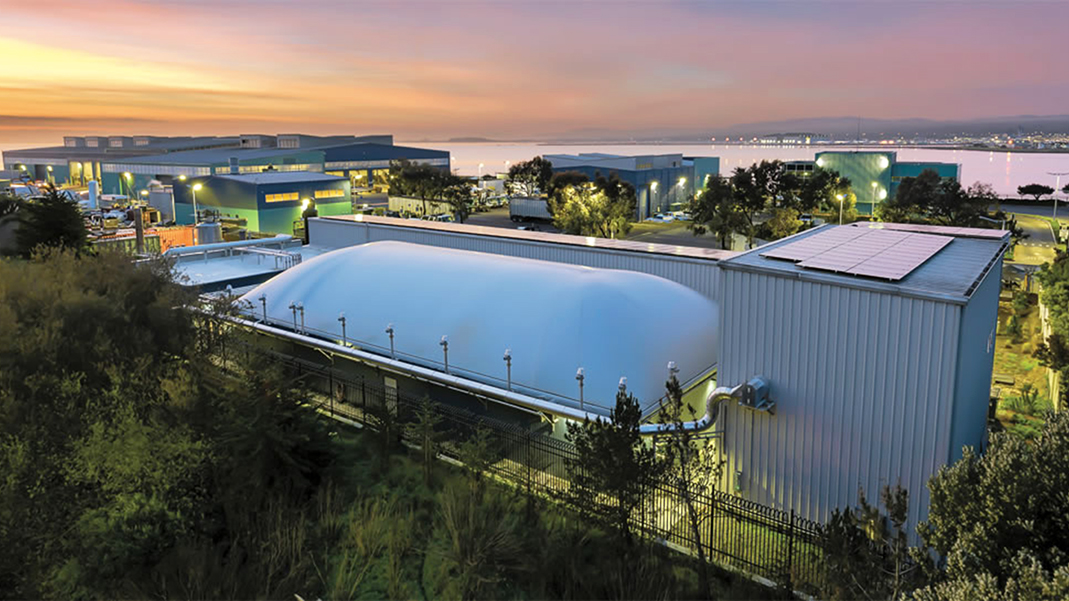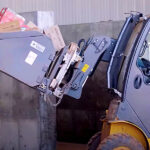Top: South San Francisco Scavengers’ food scraps and green waste anaerobic digester facility.
Before January 2021, no food scraps-to-renewable natural gas (RNG) pathways had been certified by the California Air Resources Board (CARB) under CA-GREET 3.0 — the version of the life cycle analysis model used by the agency since 2019 to certify Low Carbon Fuel Standard (LCFS) pathways. Then in January, CARB used the rare Design-based pathway process to certify a pathway in the City of Napa, California for Zero Waste Energy (ZWE), as described in a recent BioCycle article.
That certification was noteworthy not only because of the process used, but also because of the ultra-low carbon intensity (CI) of the pathway at -165 gCO2e/MJ. Now CARB has certified a second food scraps-to-RNG pathway, this time for South San Francisco Scavengers (SSFS) located in South San Francisco, California. SSFS operates a ZWE digester system to process food scraps and green waste. The certification, effective on April 1, 2021, was at a CI of -79.91.
It’s noteworthy that the CIs of the two pathways are markedly different even though the feedstocks are the same type of organic waste and both companies employ the same type of anaerobic digester. The reason relates to the source of the energy used to power the respective plants’ processes. The Napa ZWE plant will use all renewable gases to power the plant, consisting of lean gas purged from the anaerobic digester and tail gas from the upgrading system. SSFS’s plant uses a combination of pipeline natural gas supplemented with lean and tail gases. However, even though the SSFS CI is substantially higher than ZWE’s, it’s still much lower than those typically obtained by landfill gas and wastewater sludge pathways, and also much lower than those obtained by other diesel substitutes like renewable diesel (lowest CI: 16.89, highest CI: 78.60, with most in the range of 20 to 45) and biodiesel (lowest CI: 11.99, highest CI: 66.13, with most in the range of 20 – 40). Like ZWE, SSFS used the Tier 2 fuel pathway application process.
—Nathalie Hoffman, LCFS Consulting Services, Inc.













